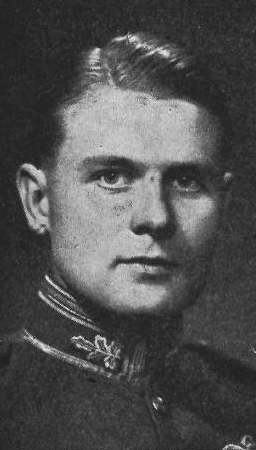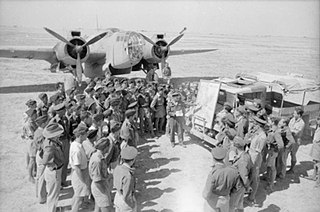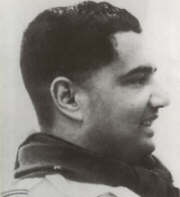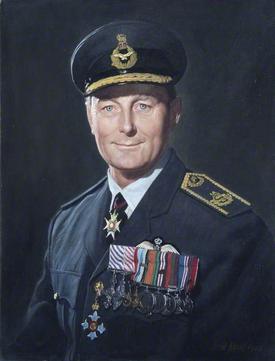
Marshal of the Royal Air Force William Sholto Douglas, 1st Baron Douglas of Kirtleside, was a senior commander in the Royal Air Force. After serving as a pilot, then a flight commander and finally as a squadron commander during the First World War, he served as a flying instructor during the inter-war years before becoming Director of Staff Duties and then Assistant Chief of the Air Staff at the Air Ministry.

Marshal of the Royal Air Force Sir Andrew Henry Humphrey, was a senior officer in the Royal Air Force. He fought in the Second World War as a fighter pilot taking part in the Battle of Britain and also took part in the withdrawal from Aden in November 1967. He served as the Chief of the Air Staff advising the new Labour Government on the implementation of their latest Defence Review. He then served as Chief of the Defence Staff but caught pneumonia within three months of taking office and died shortly afterwards.

Marshal of the Royal Air Force Sir Michael James Beetham, was a Second World War bomber pilot and a high-ranking commander in the Royal Air Force from the 1960s to the 1980s. As Chief of the Air Staff during the Falklands War, he was involved in the decision to send the Task Force to the South Atlantic. At the time of his death, Beetham was one of only six people holding his service's most senior rank and, excluding Prince Philip's honorary rank, he had the longest time in that rank, making him the senior Marshal of the Royal Air Force.

Marshal of the Royal Air Force Sir John Cotesworth Slessor, was a senior commander in the Royal Air Force (RAF), serving as Chief of the Air Staff from 1950 to 1952. As a pilot in the Royal Flying Corps during the First World War, he saw action with No. 17 Squadron in the Middle East, earning the Military Cross, and with No. 5 Squadron on the Western Front, where he was awarded the Belgian Croix de Guerre. Between the wars he commanded No. 4 Squadron in England, and No. 3 (Indian) Wing, earning the Distinguished Service Order for operations with the latter in Waziristan. In 1936, he published Air Power and Armies, which examined the use of air power against targets on and behind the battlefield.

Marshal of the Royal Air Force Sir Dermot Alexander Boyle, was a senior officer in the Royal Air Force. He served in the Second World War initially as a staff officer with the Advanced Air Striking Force in Reims in which capacity he organised the evacuation of the Force through Brest in May 1940. His war service included tours as a bomber squadron commander, as a station commander and also as an air group commander. He was Chief of the Air Staff in the late 1950s and, in that role, deployed British air power during the Suez Crisis in October 1956 and defended the RAF against the views of Duncan Sandys, the Minister for Defence, who believed that the V bomber force rendered manned fighter aircraft redundant.

Marshal of the Royal Air Force Sir Thomas Geoffrey Pike, was a senior officer in the Royal Air Force. He served in the Second World War as a night fighter squadron commander and then as a station commander. He was Chief of the Air Staff in the early 1960s and, in that role, deployed British air power as part of the British response to the Brunei Revolt. Also, in the face of escalating costs, he implemented the cancellation of the British Blue Streak ballistic missile system but then found the RAF was without any such capability when the Americans cancelled their own Skybolt ballistic missile system. He went on to be Deputy Supreme Commander Supreme Headquarters Allied Powers Europe in the mid-1960s.

Marshal of the Royal Air Force Samuel Charles Elworthy, Baron Elworthy, was a New Zealand-born senior officer in the Royal Air Force. He served as commander of a squadron of Blenheim bombers and then as a station commander during the Second World War. He became Chief of the Air Staff in the mid-1960s and implemented the cancellation of the TSR-2 strike aircraft and the HS681 military transport aircraft programmes. He also became Chief of the Defence Staff in which role he oversaw the evacuation from Aden in November 1967 and had to respond to the growing crisis in Northern Ireland in the late 1960s.

Marshal of the Royal Air Force Neil Cameron, Baron Cameron of Balhousie, was a senior officer in the Royal Air Force. He fought in the Second World War as a fighter pilot taking part in the Battle of Britain, the Battle of Alam el Halfa, the First Battle of El Alamein and the Second Battle of El Alamein and then in operations in Burma. He served as Chief of the Air Staff in the late 1970s advising the British Government on the reinforcement of the British garrison in Belize which was under threat from Guatemala at the time. He also served as the Chief of the Defence Staff at the end of the 1970s in which role he secured pay comparability for services personnel involved in civil support during the firemen's strike, visited the People's Republic of China and lectured extensively on the Soviet air threat.

Marshal of the Royal Air Force Sir Denis Frank Spotswood, was a senior commander in the Royal Air Force. He fought in the Second World War as a flying boat pilot and then as a coastal reconnaissance squadron commander during Operation Torch, the invasion of North Africa. He served as a station commander in the late 1940s and early 1950s before becoming a senior air commander in the late 1950s. As the Chief of the Air Staff in the early 1970s he had a major role in implementing the defence savings demanded by the Heath Government in the face of economic difficulties at the time.

Air Chief Marshal Sir George Holroyd Mills, was a senior Royal Air Force commander. After his retirement from the RAF, Mills served as Black Rod in the Houses of Parliament until 1970. He was also a trustee of the Imperial War Museum.

Air Chief Marshal Sir James Milne Robb, was a senior Royal Air Force commander. After early service in the First World War with the Northumberland Fusiliers, Robb joined the Royal Flying Corps and became a flying ace credited with seven aerial victories. He was granted a permanent commission in the Royal Air Force in 1919 and commanded No. 30 Squadron RAF in the Iraqi revolt against the British. In 1939, Robb travelled to Canada to help establish the Empire Air Training Scheme, a massive training program that provided the Royal Air Force with trained aircrew from Canada, Australia, New Zealand and Southern Rhodesia. He commanded No. 2 Group RAF of RAF Bomber Command and No. 15 Group RAF of RAF Coastal Command.

Hugh Verity, was a Royal Air Force fighter pilot and later a "special duties" squadron pilot working with the Special Operations Executive (SOE) during World War II. He landed many times at clandestine airfields in occupied France to insert and extract SOE agents. He was decorated for gallantry five times.
Air Chief Marshal Sir John Barraclough was a Royal Air Force pilot during the Second World War who went on to become Vice-Chief of the Defence Staff.

Air Chief Marshal Sir Douglas Claude Strathern Evill, was an Australian-born British Royal Naval Air Service pilot and squadron commander during the First World War. Serving in the Royal Air Force between the wars, he was a senior air commander during the Second World War.

Air Chief Marshal Sir Peter de Lacy Le Cheminant, was a senior commander of the Royal Air Force (RAF), who served as Vice-Chief of the Defence Staff from 1974 to 1976 and Deputy Commander-in-Chief of Allied Forces Central Europe from 1976 until his retirement in 1979.
Air Chief Marshal Sir David Harcourt-Smith, was a Royal Air Force officer who served as Air Officer Commanding-in-Chief at RAF Support Command from 1984 to 1986. He is the author of Wings Over Suez, an account of air operations during the Sinai and Suez wars.
Air Vice Marshal Peter John Harding, was a senior Royal Air Force officer who served as Defence Services Secretary from 1994 to 1998.

Wing Commander Karun Krishna 'Jumbo' Majumdar, DFC & bar was an officer in the Indian Air Force. He was the first Indian to reach the rank of wing commander.

Air Vice-Marshal Wilfrid Ewart Oulton, was an officer in the Royal Air Force. During the Second World War he was credited with sinking three German U-boats—U-463, U-663, and U-563—in one month while serving in RAF Coastal Command. He was in charge of the British nuclear tests of hydrogen bombs in the Pacific Ocean in Operation Grapple in 1957.

Air Vice Marshal Stewart William Blacker Menaul, was an officer in the Royal Air Force (RAF). During the Second World War he served in RAF Bomber Command with the elite Pathfinder Force. After the war he participated in the British nuclear weapons tests in Australia, and was on board the Vickers Valiant that dropped Britain's first atomic bomb on 11 October 1956 during Operation Buffalo.

















